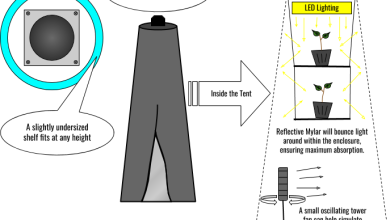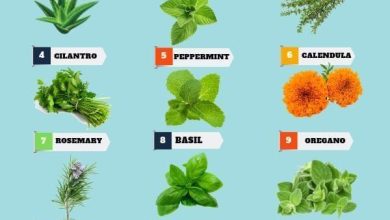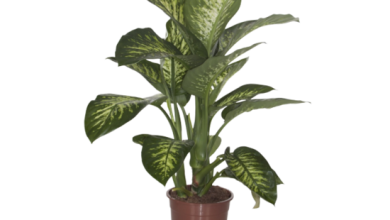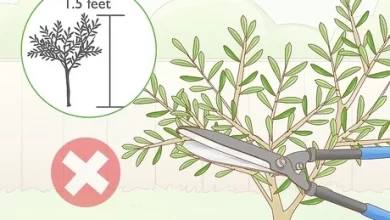Planting a Pitahaya: [Cultivation, Care, Pests and Diseases]
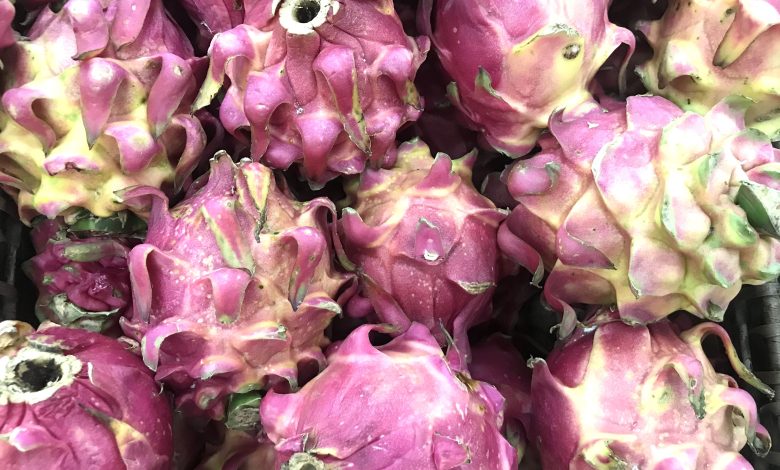
Important points when sowing Pitahaya
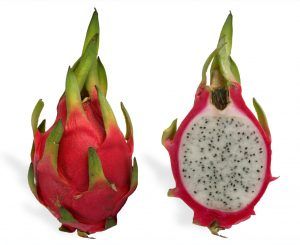 When is it planted? In seasonal countries, at the beginning of winter. In tropical regions, plant in the dry season.
When is it planted? In seasonal countries, at the beginning of winter. In tropical regions, plant in the dry season.- Where? In garden and pot.
- How do we prepare the land? Ideal soil is 2/3 peat or leaf mulch with an addition of 1/3 siliceous sand.
- How do we water? Abundant in spring and summer and little in winter.
- How often do we water? Every 3 days in seasonal countries during spring and summer, avoiding flooding.
- What pH level does the soil need? Slightly acid , between 5.5 to 6.5.
- When should you prune? At the beginning, so that strong pods are formed that lean on the support tutor, in production and to eliminate the sick ones.
- What pests and diseases do they have ? The worst disease is stem rot and plagues attack such as stem borer, black weevil, flower bud fly, and rootstock bug.
When to plant a pitahaya?
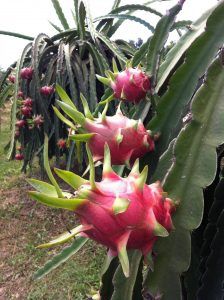 The Pitahaya is the delicious fruit of the Hylocereus and Selenicereus species of an exotic succulent plant of the Cactaceae or cacti family made up of around 10 species native to Mexico, Central America and the Caribbean.
The Pitahaya is the delicious fruit of the Hylocereus and Selenicereus species of an exotic succulent plant of the Cactaceae or cacti family made up of around 10 species native to Mexico, Central America and the Caribbean.
It is a perennial plant, whose Hylocereus version comes from tropical America, has a creeping behavior.
They are spindly cacti with dark green stems that can reach about 5 meters in height, with 3 thorns on the areolas, beautiful white flowers and fruits with a very rich flavor.
It is also known by the name of Dragon fruit or Pitaya. And the best time to grow it will depend on the geographical region. In seasonal countries, it is best to plant previously rooted pitahaya as soon as winter starts.
And if planting is done during the dry season, then watering should be abundant, before and after, in order to avoid damage from exposure to high temperatures.This fruit has a variety of expensive yellow and red pitahayas, because they are not often grown.
Its pulp is characterized by numerous very small black seeds that contrast with the vivid tones of its juicy pulp, which can also be white. Currently, the world production of Pitahayas is concentrated in countries of the American continent such as Mexico, Nicaragua, Peru, Costa Rica and Colombia.
But in Asia they dominate China and Vietnam. Israel also cultivates it on a large scale.
Where to plant a pitahaya?
If you live in a warm climate with a long growing season, you can keep the Pitahaya outdoors, without problems caused by frost or winter snowfall that do affect it.
But it is actually quite versatile, because it can also be grown in a pot, where it develops optimally, lavishing beautiful flowers and succulent fruits. In other words, Pitahayas can serve as indoor or greenhouse plants, except in tropical climates where there are species that adapt.
For example, to a wall, behaving as an efficient climbing plant, since they have external secondary roots that act as suckers attached to the surface they invade.
How do we prepare the soil and what pH level is ideal?
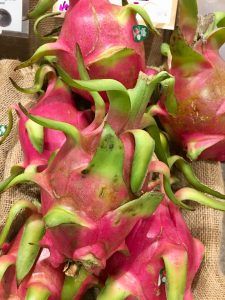 The ideal soil is made up of 2/3 parts of peat or a leaf mulch with an addition of 1/3 of siliceous sand.
The ideal soil is made up of 2/3 parts of peat or a leaf mulch with an addition of 1/3 of siliceous sand.
Another excellent substrate for the Pitahaya in a pot is made up of earthworm humus with black soil with plenty of organic matter, including animal manure (belonging to horses, chickens, etc.).
Construction sand or perlite should also be added in a proportion of 20-30% to the composition of the substrate, so that the cactus always has very good drainage, a vital condition so that this curious plant with a very fruitful fruit always remains healthy. exotic that every day gains more commercial ground worldwide.
In conclusion, it is never advisable to use muddy soils, what is essential for its full development is to have it in soils with very good drainage, which do not get waterlogged.A slightly acidic pH level, between 5.5 to 6.5, favors it a lot.
How often do we water and how do we do it?
A maxim that must be fulfilled in terms of irrigation is that they must be abundant in spring and summer (3 times a week) but in winter the opposite will happen: it will receive the least amount of water possible, although it must be ensured that the soil does not dry out completely.
In regions with subtropical and tropical climates, water is equally valid, but much less generous for irrigation, always without flooding the surface of the ground or the soil in the pot.But it should be noted that the genus Hylocereus from what is called tropical America and the Caribbean does not require large amounts of water.
Of this genus, the most cultivated species with these characteristics of great tolerance to rather dry climates, is the Hylocereus undatus, which in its first two years of planting requires that the support risks be greater for a full healthy development, but after No. It should only be watered during flowering.
If it is watered a lot in the dry season, future flowering will be aborted.
How to plant a pitahaya step by step?
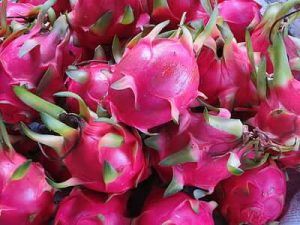 The first thing to do is decide if seeds will be used for the first planting of our Pitahaya, but in reality it is better to choose to grow it from the cutting or stem of another plant, since it takes much less time to flower and bear fruit.
The first thing to do is decide if seeds will be used for the first planting of our Pitahaya, but in reality it is better to choose to grow it from the cutting or stem of another plant, since it takes much less time to flower and bear fruit.
So the most advisable thing is to look for a good specimen in a trusted nursery and undertake the noble mission of transplanting it in the garden. There are specimens ready to be planted in well-drained soils.
Or in a pot, where it also adapts very well to a productive life if it is well cared for, so much so that you will probably have to plant it in a new, larger pot after a few years.Let’s see, step by step, how to plant the Dragon fruit.
potted
- Purchase a pot or planter that is about 15 by 24 inches (40 by 60 centimeters) in diameter and 10 inches (25 centimeters) deep. You will need to provide support with a wooden helper pole.
- Prepare a mixture of soil with very good drainage, with sand included because it is a cactus and the substrate cannot get muddy. Perlite at 30% or construction sand in the same proportion will be ideal so that the water quickly drains down and flows through the lower holes of the pot.
- You can also simply mix sand, potting soil, and compost together. Fill it and leave about 7cm around the edge free.
- Take the plant and very carefully center it in the pot and cover it with the rest of the soil that you previously reserved.
- Water it generously, but without flooding the soil.
- As the seedling grows, it should have a stake next to it that serves as a support so that it can stand up without difficulty. Measurements: 3 meters long x 10 cm diameter or a little more.
garden cultivation
- The first thing will be to choose a place where it receives good sun, but also make sure that the roots have some shade. The tips of the plant will need a good daily dose of sunlight, so you can’t pick a spot at random. You have to study well the place with the best lighting to plant it.
- Remember that the land of the garden must have very good drainage, so also calculate that it lives in an area where the water never pools.
- And if it rains a lot in the area where you live, then try to plant it on a mound or hill so that the water drains easily.
- Dig the hole, introduce the entire plant without damaging its root ball and fill it with soil until it is evenly covered.
- Water generously, without incurring in excesses that drown it.
- Repeat watering whenever the soil dries out completely.
Planting by stakes
- A direct seeding by stakes in the garden, also proceeds positively. It is done in the middle of autumn.
- After selecting the most suitable place in the garden for your cactus, you should have three supports or support pods at hand, in an estimated planting area of 3×3 meters with a north-south orientation.
- When rooted plants are placed, they must be carefully removed from their plastic wrap and then proceed to the placement of a hill of earth or mound around the plants that you plant.
What care does a pitahaya require?
Climate
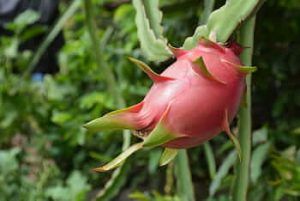 It prefers above all, warm and semi-humid climates. But it is also able to thrive very strongly in dry climates.
It prefers above all, warm and semi-humid climates. But it is also able to thrive very strongly in dry climates.
An ideal temperature for its development ranges between 16-25ºC, and it should not be exposed to low temperatures and snowfall.
But it also suffers if it is exposed to temperatures that exceed 38ºC. Their stems will burn when there is a severe drought. Prolonged exposure to direct solar radiation is detrimental to the health of the plant.
However, for its full development it needs good natural lighting, that is, good sunlight so that the buds of the flower buds can take place normally.But it must also have a partial semi-shade at some time of the day. If it is total, the production of its fruits is paralyzed.
Pass
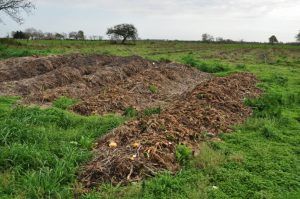 Although it is recommended that a soil analysis be done before fertilizing the plant, it helps a lot to know that this plant requires good doses of potassium, nitrogen and phosphorus.
Although it is recommended that a soil analysis be done before fertilizing the plant, it helps a lot to know that this plant requires good doses of potassium, nitrogen and phosphorus.
The application technique consists of opening ditches around the plant in a circular fashion and applying the product.
During the summer, it is also appropriate to make foliar applications of fertilizers for cacti that will most certainly favor good flowering and excellent quality fruits.
Irrigation
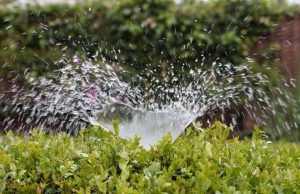 In seasonal regions, irrigation must be prudent in winter, scarce, and accentuated in spring and summer, to cool it.
In seasonal regions, irrigation must be prudent in winter, scarce, and accentuated in spring and summer, to cool it.
But generally speaking, water is emphasized more in the first two years of life to give it vigor and help healthy development. Then it is reduced only to the flowering period.
Pruning
It is a fast growing plant that will require the following types of pruning:
formation pruning
It is practiced from the beginning of the plantation with the aim of eliminating shoots, because two pods must be left that reach the end of the support or support tutor.
In this modeling process, the lateral stems must be eliminated and when the plant has already reached the top of the stake, it must then be blunted so that lateral sheaths develop from the end.
cleaning pruning
It appeals to a cleaning of the pods of the plant affected by diseases and pests, or by a bad location. It is done right in the area of the internode.
production pruning
It is very important, because in the 3rd year of life of the Pitahaya, any lower unproductive pod that robs the main stem of vigor is eliminated.This is done in order to improve aeration and achieve good sun exposure.
When do we harvest the pitahayas?
It has a productive capacity that runs gradually from mid-autumn to early spring, although in some cases it also lasts until the end of spring.
The fruits must be collected when they are ripe, cutting them from the peduncle so as not to damage the pod.
What pests and diseases attack pitahaya?
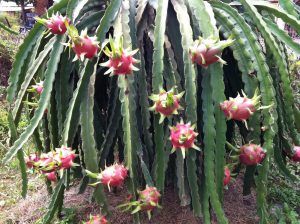 Although they are usually quite resistant plants, as long as they receive the best care, stem rot or Erwinia carotovora is the worst disease you can suffer from.
Although they are usually quite resistant plants, as long as they receive the best care, stem rot or Erwinia carotovora is the worst disease you can suffer from.
It usually appears first with the appearance of chlorotic spots that cover the entire affected pod, until watery rot occurs and it succumbs.
It is combated with preventive measures such as the elimination of the diseased pod, disinfection of pruning tools, elimination of dry foliage and avoiding injuries to the plant. Chemical treatments do not work.
Other diseases
Fish eye disease or Dothiorella sp
That is also evidenced by circular brown spots on the plant’s pods, which are expanding rapidly.
Anthracnose or Colletotrichum sp.
 Caused by a fungus that appears thanks to high relative humidity, with black circular spots that sink into the pods, as well as into the fruits, with the same wounds.
Caused by a fungus that appears thanks to high relative humidity, with black circular spots that sink into the pods, as well as into the fruits, with the same wounds.
But covered with orange or pink spores, until the plant withers and perishes.Specific fungicides for cacti can save the plant at the onset of the disease.
pests
The most frequent are the Stem Borer, the Black Weevil, the ants when they behave as a pest, the Flower Button Fly and the Paton Bug.
Fighting them goes through the need to consult experts of the genre.For each case there are products of chemical, ecological and biological control origin.

